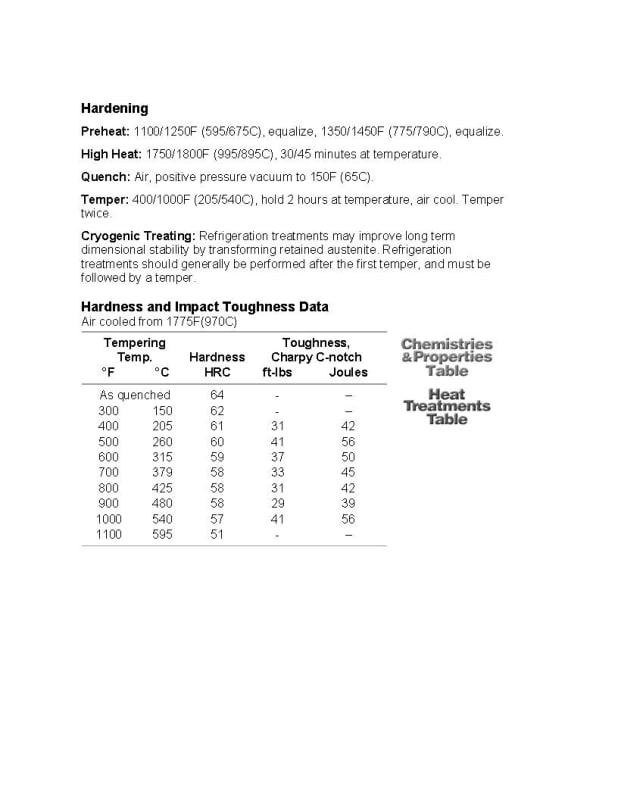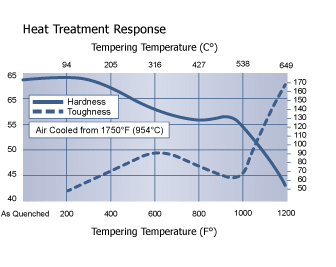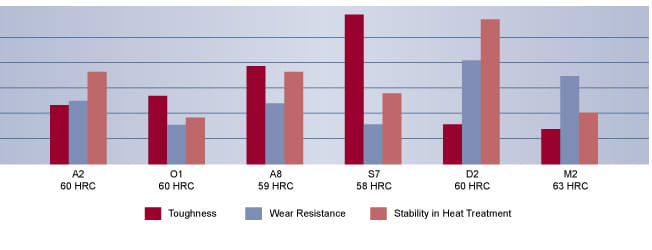I'm seeking a couple charts.
First, I'm looking for a chart that breaks down some of the common metals and what they're good for, or where they'd best be used. Example: A2 - Tool Steel - Good for contacting other parts.
Second, I"m looking for a chart that shows and compares the various hardnesses you can apply by heat treatment to certain materials and their benefits. I've found a similar chart that breaks up certain tool steels and rates them 1-10 on toughness, wear resistance, and compression strength. But I'm looking for something that might indicate, what properties does A2 have hardened to 58 versus what properties does A2 have hardened to 62.
First, I'm looking for a chart that breaks down some of the common metals and what they're good for, or where they'd best be used. Example: A2 - Tool Steel - Good for contacting other parts.
Second, I"m looking for a chart that shows and compares the various hardnesses you can apply by heat treatment to certain materials and their benefits. I've found a similar chart that breaks up certain tool steels and rates them 1-10 on toughness, wear resistance, and compression strength. But I'm looking for something that might indicate, what properties does A2 have hardened to 58 versus what properties does A2 have hardened to 62.




